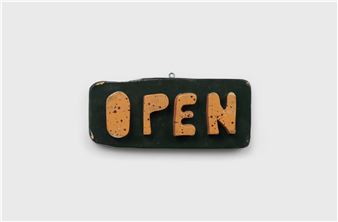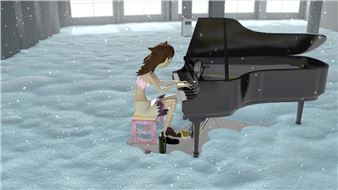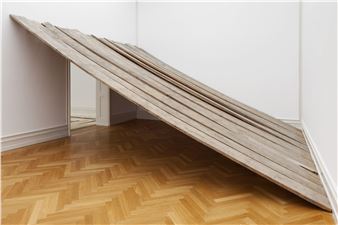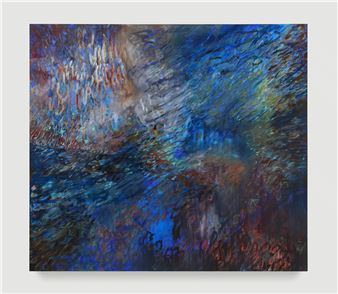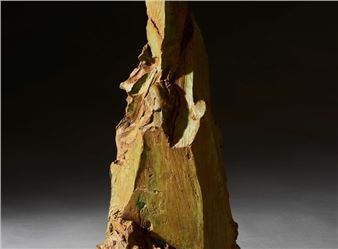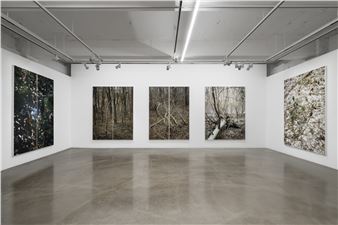Marguerite Humeau: Dust
White Cube Seoul is pleased to present вҖҳDUSTвҖҷ by Marguerite Humeau, marking the artistвҖҷs debut solo exhibition in Asia. Comprising new sculptures, photography and works on paper, the works in the presentation visualise the unseen natural forces involved in the mechanics of space and time. Animating dust as a key protagonist in an operatic milieu, Humeau takes this overlooked matter and imbues it with meaning вҖ“ as symbolic of the interconnected forces of life and death, and carrier of multitudinous temporalities.
The works featured in вҖҳDUSTвҖҷ continue a line of inquiry originating in HumeauвҖҷs major land artwork вҖҳOrisonsвҖҷ (2023), which takes place in a single 160-acre fallow crop circle in ColoradoвҖҷs San Luis Valley. In so doing, вҖҳOrisonsвҖҷ situates one artistвҖҷs concerns within the greater scheme of the persistence and resilience of life, between the rolling sand dunes driven by a consistent eastward wind, the drama of the horizon and expansive open sky, the remains of animal bones and nomadic weeds. In recognition of this unique site teeming with life and layered histories, Humeau sought to devise an ephemeral artistic intervention that would at the same time celebrate the land as artwork in and of itself.
Through an extensive period of research and close collaboration with local farmers, geomancers, conservation experts, a wildlife refuge, foragers, ornithologists and indigenous communities, Humeau discovered the San Luis Valley of the past and of the present: an area now afflicted by aridification due to climate change. вҖҳOrisonsвҖҷ is the ancient word for prayer, and as a gesture of reparation between human and land the artist created sculptural, divination instruments informed by the native wildlife, each placed at strategic вҖҳactivation pointsвҖҷ across the site and then detailed in a map along with other locations of interest. This visitor guidance map вҖ“ which conceptually interfaces past, present and speculative futures вҖ“ commemorates, for example, the migratory path taken by ancestral nomads, the upkeep of an Artesian well, and the dead bird that Humeau herself found and buried while working there.
For вҖҳDUSTвҖҷ, Humeau has created a series of intricate sculptures that visualise the activation points of вҖҳOrisonsвҖҷ as spacetime portals. Through compositions that combine an array of materials вҖ“ including copper wire, bronze and glass, unglazed terracotta, onyx and organza вҖ“ the complexly enmeshed histories of вҖҳOrisonsвҖҷ take three-dimensional form. Works such as release of gravity, extraction pipes, the twist and the guardian of Earth migrations (all 2024) describe this with sweeping curves and ascending coils, and tumid, clustered threads suggestive of roiling masses of energy. Funnelling upwards in cyclonic formation, their forms invoke the scientific modelling of elemental forces, as well as art historical depictions of the spiritual.
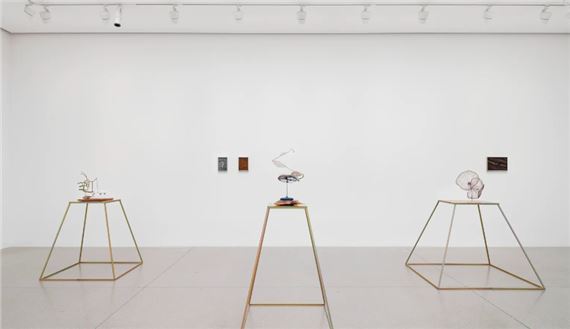
Recommended for you
White Cube Seoul is pleased to present вҖҳDUSTвҖҷ by Marguerite Humeau, marking the artistвҖҷs debut solo exhibition in Asia. Comprising new sculptures, photography and works on paper, the works in the presentation visualise the unseen natural forces involved in the mechanics of space and time. Animating dust as a key protagonist in an operatic milieu, Humeau takes this overlooked matter and imbues it with meaning вҖ“ as symbolic of the interconnected forces of life and death, and carrier of multitudinous temporalities.
The works featured in вҖҳDUSTвҖҷ continue a line of inquiry originating in HumeauвҖҷs major land artwork вҖҳOrisonsвҖҷ (2023), which takes place in a single 160-acre fallow crop circle in ColoradoвҖҷs San Luis Valley. In so doing, вҖҳOrisonsвҖҷ situates one artistвҖҷs concerns within the greater scheme of the persistence and resilience of life, between the rolling sand dunes driven by a consistent eastward wind, the drama of the horizon and expansive open sky, the remains of animal bones and nomadic weeds. In recognition of this unique site teeming with life and layered histories, Humeau sought to devise an ephemeral artistic intervention that would at the same time celebrate the land as artwork in and of itself.
Through an extensive period of research and close collaboration with local farmers, geomancers, conservation experts, a wildlife refuge, foragers, ornithologists and indigenous communities, Humeau discovered the San Luis Valley of the past and of the present: an area now afflicted by aridification due to climate change. вҖҳOrisonsвҖҷ is the ancient word for prayer, and as a gesture of reparation between human and land the artist created sculptural, divination instruments informed by the native wildlife, each placed at strategic вҖҳactivation pointsвҖҷ across the site and then detailed in a map along with other locations of interest. This visitor guidance map вҖ“ which conceptually interfaces past, present and speculative futures вҖ“ commemorates, for example, the migratory path taken by ancestral nomads, the upkeep of an Artesian well, and the dead bird that Humeau herself found and buried while working there.
For вҖҳDUSTвҖҷ, Humeau has created a series of intricate sculptures that visualise the activation points of вҖҳOrisonsвҖҷ as spacetime portals. Through compositions that combine an array of materials вҖ“ including copper wire, bronze and glass, unglazed terracotta, onyx and organza вҖ“ the complexly enmeshed histories of вҖҳOrisonsвҖҷ take three-dimensional form. Works such as release of gravity, extraction pipes, the twist and the guardian of Earth migrations (all 2024) describe this with sweeping curves and ascending coils, and tumid, clustered threads suggestive of roiling masses of energy. Funnelling upwards in cyclonic formation, their forms invoke the scientific modelling of elemental forces, as well as art historical depictions of the spiritual.
Artists on show
Contact details

Related articles
вҖңDUSTвҖқ by Marguerite Humeau marks the artistвҖҷs debut solo exhibition in Asia.
White Cube Seoul is presenting вҖҳDUSTвҖҷ by Marguerite Humeau, marking the artistвҖҷs debut solo exhibition in Asia.

 ARTISTS
ARTISTS







